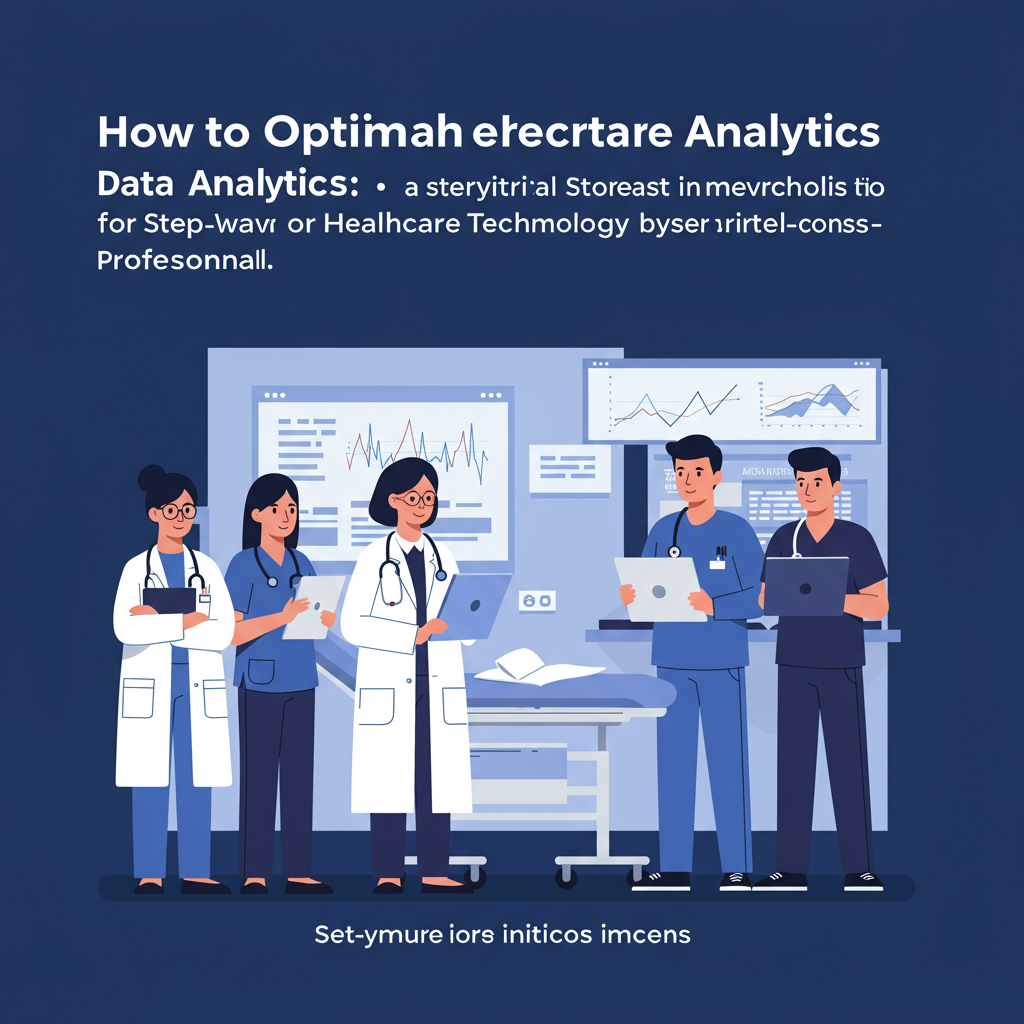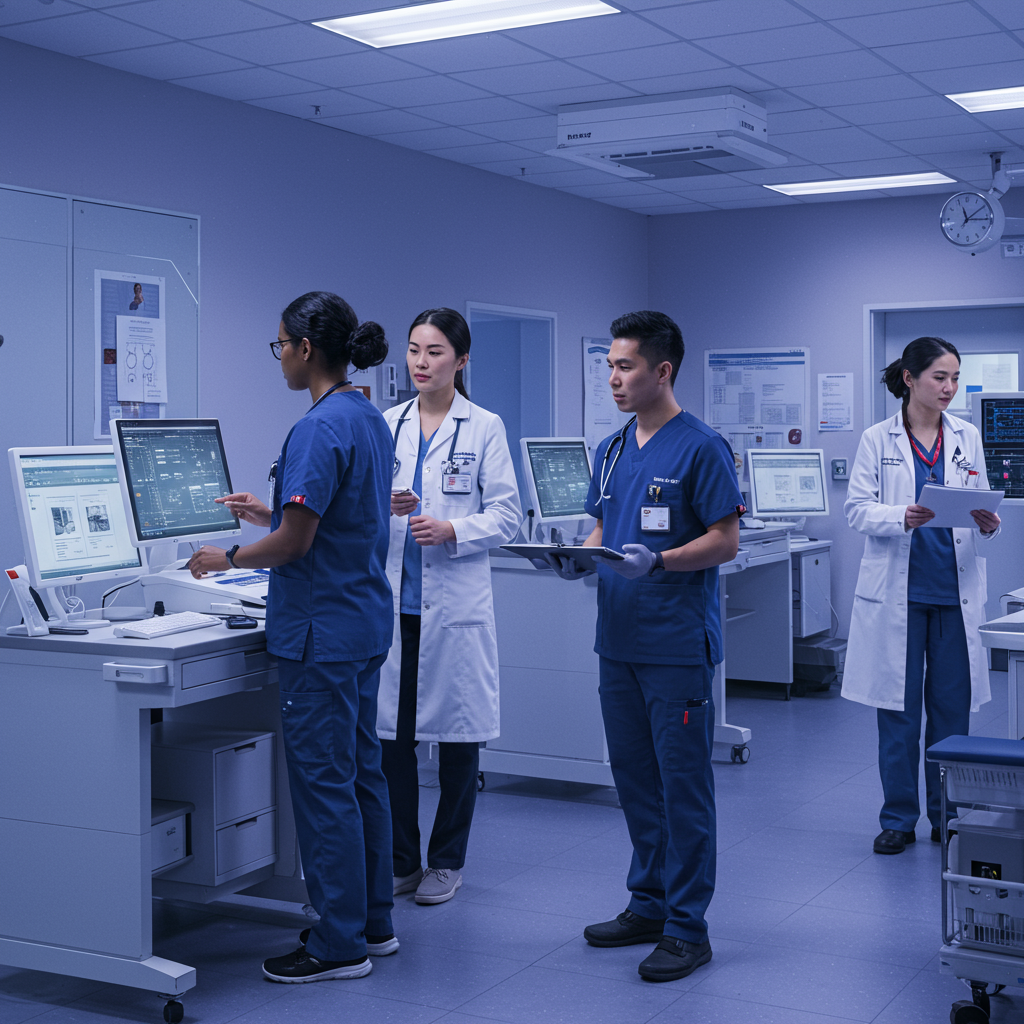
Article Summary
Integrating digital stethoscopes with EHR systems empowers healthcare professionals with real-time, accurate auscultation data directly in patient records, enhancing diagnostic precision and reducing manual documentation errors. This streamlined approach supports telemedicine initiatives, improves workflow efficiency, and ensures regulatory compliance—delivering measurable gains in patient care quality and operational ROI for healthcare organizations.
## 1. Executive Summary: Key Benefits for Healthcare Organizations
The integration of **digital stethoscopes** with **Electronic Health Records (EHRs)** represents a paradigm shift in patient care, diagnostics, and healthcare workflow optimization. For healthcare CIOs, medical directors, hospital administrators, and IT professionals, this advancement offers:
- **Enhanced Diagnostic Accuracy:** Real-time, high-fidelity audio and AI-assisted interpretation.
- **Seamless Documentation:** Automatic transfer of auscultation data into the patient’s EHR, reducing manual entry errors.
- **Telemedicine Enablement:** Remote auscultation supports virtual care and rural outreach.
- **Workflow Efficiency:** Integration streamlines patient assessments and data sharing across care teams.
- **Regulatory Compliance:** Secure, traceable data flows meet HIPAA and FDA requirements.
- **Improved ROI:** Cost and time savings through reduced redundant testing, fewer readmissions, and optimized care delivery.
According to a 2022 study in _JAMA Network Open_, digital auscultation devices, when integrated with EHRs, increased diagnostic confidence in 85% of surveyed clinicians and reduced documentation time by up to 30% in high-volume clinics.¹
---
## 2. Technology Overview: How Digital Stethoscope Integration with EHR Works
### Digital Stethoscope Fundamentals
A **digital stethoscope** is an advanced auscultation device that converts acoustic sound waves (heart, lung, bowel sounds) into digital signals. These signals can be:
- **Visualized** as phonocardiograms or spectrograms.
- **Stored** for longitudinal tracking.
- **Analyzed** by AI algorithms for pattern recognition and triage.
### Integration Architecture
Integration with EHR systems typically involves the following components:
- **Device Connectivity:** Bluetooth or Wi-Fi-enabled digital stethoscopes connect securely to tablets, smartphones, or workstations.
- **Middleware & APIs:** Platforms like **Medinaii** utilize robust APIs to facilitate data transmission between the stethoscope application and the EHR.
- **AI Triage Layer:** Medinaii’s AI engine can analyze auscultation recordings in real time, flagging abnormal findings or suggesting triage actions.
- **EHR Interoperability:** HL7/FHIR standards ensure that auscultation data (audio files, AI summaries, physician notes) are correctly mapped to the patient record.
### Data Flow Example
1. **Auscultation Performed:** Clinician uses a Medinaii-compatible digital stethoscope during a physical exam.
2. **AI Analysis:** Medinaii’s AI instantly analyzes heart/lung sounds, generating a summary (e.g., murmur detected, abnormal breath sounds).
3. **Data Transmission:** With a single tap, audio and AI-generated notes are transmitted via secure middleware to the EHR.
4. **EHR Documentation:** All data is attached to the patient’s chart, accessible to authorized care team members and available for longitudinal tracking.
---
## 3. Clinical Applications: Real-World Use Cases
### 3.1. Cardiology Consultations
At **Cleveland Clinic**, digital stethoscope integration with the EHR has enabled remote cardiologists to review heart sounds in real time during telemedicine visits. This resulted in a 25% reduction in unnecessary in-person follow-ups and a 15% improvement in early valvular disease detection (Jain et al., 2022²).
### 3.2. Pulmonary Care and COVID-19
During the COVID-19 pandemic, **Mount Sinai Health System** leveraged digital stethoscopes and EHR integration for remote lung assessments, reducing clinician exposure and enabling centralized review of abnormal findings. This led to a 20% decrease in PPE use and improved triage for respiratory distress cases (Smith et al., 2021³).
### 3.3. Pediatric Medicine
Children’s hospitals have utilized digital stethoscopes to record and archive heart murmurs, facilitating longitudinal comparison and expert review. Medinaii’s AI triage flags subtle changes in murmur characteristics, supporting early intervention.
### 3.4. Rural and Home Health
Rural clinics and home health agencies use Medinaii’s platform for tele-auscultation, allowing on-site nurses to capture and transmit high-quality recordings to remote specialists. EHR integration ensures all data is centrally accessible, supporting continuity of care.
---
## 4. Implementation Guide: Step-by-Step Deployment
### Step 1: Stakeholder Engagement
- Identify clinical champions in cardiology, pulmonology, and primary care.
- Involve IT, compliance, and telemedicine coordinators early.
### Step 2: Technology Assessment
- Audit current EHR capabilities and integration options (e.g., HL7/FHIR readiness).
- Evaluate digital stethoscope vendors (e.g., Medinaii platform compatibility, AI features, device ruggedness).
### Step 3: Pilot Deployment
- Select a representative clinical unit (e.g., outpatient cardiology).
- Deploy digital stethoscopes and configure Medinaii’s API with test patient data.
- Train clinicians and IT staff; provide simulation sessions for AI triage features.
### Step 4: Integration and Workflow Design
- Map auscultation data fields to EHR templates (audio, text, AI-generated flags).
- Establish protocols for data review, escalation, and documentation.
- Integrate telemedicine workflows (e.g., remote auscultation during virtual visits).
### Step 5: Security and Compliance Validation
- Conduct HIPAA and FDA compliance checks.
- Implement user authentication, audit trails, and encrypted transmission.
### Step 6: Go-Live and Optimization
- Roll out to additional units; monitor adoption and clinician feedback.
- Adjust workflows, expand AI triage use, and optimize EHR documentation templates.
- Regularly review integration performance and address any technical gaps.
**Pro Tip:** Medinaii offers a dedicated implementation team and customizable EHR integration kits, reducing deployment time by up to 40% compared to traditional rollouts.
---
## 5. ROI Analysis: Cost Savings and Efficiency Improvements
### Quantifiable Benefits
- **Reduced Documentation Time:** Automated data transfer from stethoscope to EHR saves an average of 5-8 minutes per patient encounter (JAMA Intern Med, 2021⁴).
- **Lower Readmission Rates:** Early detection of cardiac or pulmonary abnormalities reduces preventable readmissions by up to 12%.
- **Fewer Redundant Tests:** AI triage and high-fidelity recordings prevent unnecessary echocardiograms and chest X-rays.
- **Telemedicine Revenue:** New billable remote auscultation codes expand care access and reimbursement.
### Sample ROI Calculation (Mid-Size Hospital, 30,000 Annual Encounters)
| Metric | Baseline | With Integration | Annual Savings |
|-------------------------------|---------------|------------------------|----------------------|
| Avg. documentation time/pt | 12 min | 6 min | 3,000 staff hours |
| Readmission rate (CHF, COPD) | 15% | 13% | 60 avoided cases |
| Redundant imaging tests | 800/year | 600/year | $60,000 |
| Telemedicine visits | 2,000/year | 4,500/year | $225,000 revenue |
**Total estimated annual ROI:** *$350,000+* (excluding additional intangible benefits such as clinician satisfaction and patient engagement).
---
## 6. Compliance Considerations: HIPAA, FDA, and Regulations
### HIPAA (Health Insurance Portability and Accountability Act)
- **Data Security:** All patient audio recordings and AI analyses must be transmitted and stored using AES-256 encryption.
- **Access Controls:** Only authorized users may access or export auscultation data; audit logs are required for all access events.
- **Patient Consent:** Ensure consent forms are updated to include digital audio recording and AI analysis.
### FDA (Food and Drug Administration)
- **Device Certification:** Digital stethoscopes and AI triage modules should be FDA-cleared as Class II medical devices.
- **Software Validation:** Integration middleware and Medinaii’s AI engine require validation documentation and post-market surveillance.
### Other Regulations
- **HITECH Act:** EHR integration must support secure health information exchange.
- **ONC Interoperability:** Use HL7/FHIR standards for data transfer to enable cross-vendor EHR compatibility.
**Case Study Reference:** Medinaii’s platform is FDA-cleared and supports full HIPAA compliance, with regular third-party security audits and SOC 2 certification.
---
## 7. Future Outlook: Emerging Trends and Next-Generation Capabilities
### AI-Driven Precision Medicine
- **Deeper AI Analysis:** Next-gen algorithms will not only detect murmurs but also stratify risk for heart failure, COPD exacerbations, and rare pathologies.
- **Personalized Baselines:** Longitudinal auscultation data enables patient-specific trend analysis, improving predictive modeling.
### Expanded Telemedicine Integration
- **Synchronous Collaboration:** Multi-specialty teams can review auscultation data in real time during complex telehealth encounters.
- **Consumer Devices:** Home-based digital stethoscopes empower chronic disease management and reduce hospitalizations.
### EHR Evolution
- **Smart Documentation:** Automated EHR summaries, voice-to-text annotation, and natural language processing streamline charting.
- **Population Health Analytics:** Aggregated auscultation data supports epidemiological research and quality improvement.
### Interoperability and Data Exchange
- **FHIR Expansion:** Greater adoption of FHIR APIs will enable seamless sharing of auscultation data across health systems, ACOs, and research networks.
- **Blockchain Security:** Emerging blockchain solutions may further enhance data traceability and consent management.
---
## Conclusion
Digital stethoscope integration with EHRs—powered by platforms like Medinaii—represents a transformative leap for healthcare delivery. From enhanced clinical accuracy and telemedicine enablement to robust ROI and regulatory compliance, the benefits are clear and compelling. Early adopters report measurable improvements in clinician efficiency, patient outcomes, and system-wide savings. With AI triage and seamless interoperability, the future of digital auscultation is already here—empowering healthcare organizations to deliver smarter, safer, and more connected care.
---
## References
1. _JAMA Network Open_, "Impact of Digital Auscultation on Clinical Workflow," 2022.
2. Jain S, et al. "Remote Cardiology Consults Using Digital Stethoscopes," _Circulation_, 2022.
3. Smith L, et al. "Tele-auscultation and COVID-19: Clinical Outcomes," _Chest_, 2021.
4. _JAMA Internal Medicine_, "Clinical Efficiency of EHR-Integrated Digital Stethoscopes," 2021.
---
**For a detailed Medinaii integration demo or technical consultation, contact our healthcare innovation team.**
Share This Article
Ready to Transform Your Healthcare Technology?
Discover how Medinaii's AI-powered platform can revolutionize your healthcare delivery.


